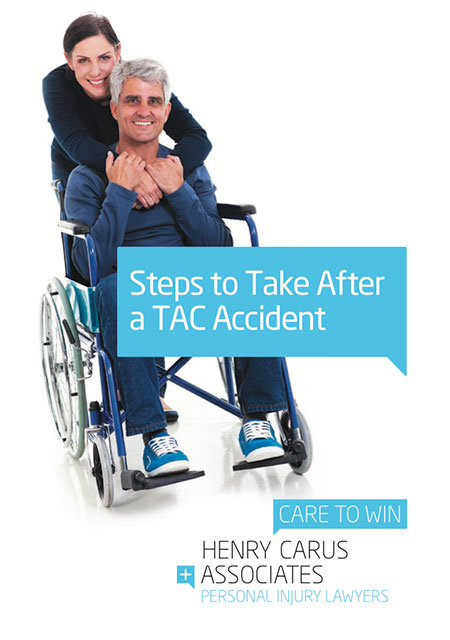
Most people have some idea of what the phrase ‘duty of care’ means. In the world of the TAC, motorists have a duty of care to other road-users to drive properly and avoid injury or harm.
If I am driving a motor vehicle and because of my negligent driving someone is seriously injured or dies, then I can be sued for compensation; I have failed in my duty of care to the person I injured or killed. The TAC will stand in my place and act as my insurer and they will pay compensation to the other person or their estate.
An area of the law that many people are unaware of is when there is a secondary victim of them accident. What does this mean? A secondary victim is usually someone who either:
- 1. Witnesses the accident directly or soon after; or
- 2. Is told about an accident involving a loved one or someone they have a very close personal relationship with.
If a person in one of these categories suffers a severe psychological reaction they may be able to bring their own claim as a secondary victim. These claims are also known traditionally as ‘nervous shock’ claims.
Someone who witnesses an accident does not need to have any connection to the person/s injured or that passes away. One of the most common examples of people in this category are emergency services workers such as paramedics, who attend traumatic accident scenes. Where someone who has failed in their duty of care has caused the accident, and the person attending the scene or directly witnesses the accident, suffers a severe psychological injury, they may be able to bring their own claim for compensation.
The second category is usually people who are informed of an accident involving a loved one by police or similar services and suffers a severe psychological reaction in response. More uncommon examples are where someone learns of injury or death of a loved one on television or radio. The key with this kind of claim is that there was a pre-existing close relationship between the person who is injured or dies and the person who has the reaction.
A stranger who is traumatised by hearing of someone’s death on the news or being told a story by a friend does not have compensation generally available to them as they are not a reasonably foreseeable victim of the accident.
In the recent decision of Homsi v Homsi handed down in the Supreme Court, a novel question was posed about how far-reaching a driver’s duty of care is. In this case the claimant’s son was driving and negligently caused a motor vehicle accident. As a result of the accident the son died. When the claimant, the driver’s mother, heard about the accident and her son’s passing she developed a severe psychological injury which was ongoing.
The questions before the court was: ‘did [the son] owe [his mother] a duty of care in the driving of his motor vehicle to ensure that he did not suffer injury or death that may result in psychiatric injury to his close relatives and, particularly, [his mother].’
The question moves in a different direction than usual. If the son had been killed by another driver’s negligence, then the mother would be able to bring a claim for as a secondary victim if she suffered a severe psychological injury.
In this case, the question is whether there is a general and permanent duty of care for all motor vehicle driver’s to take care of their own safety and avoid injury or death to themselves to avoid causing psychological injury to close relatives.
The Court rejected the idea that the duty of care extends this far. Their reasons were on two grounds:
- 1. That no authority exists in Australia to support it; and
- 2. The public policy reasons that are in favour of refusing to recognise this duty.
Essentially the public policy reason came down to the following:
- Potential of opening the ‘floodgates’ with claims for mental harm;
- Increases to TAC premiums for all drivers to support the new claims; and
- Setting a dangerous general precedent for other behaviours like:
- ‘The heroin user who unintentionally overdoses.
- The hang glider who, through lack of care, collides with a cliff.
- The farmer who puts himself in a position of danger when attacked by a bull in the cattle yard.’
The claimant had every right to raise the question and it is positive that there is now an authority and decision that guides people when considering if a claim exists for them.
The law is forever changing and evolving and without those who challenge the limits we will never know its possibilities.
 Call Us Today
Call Us Today



